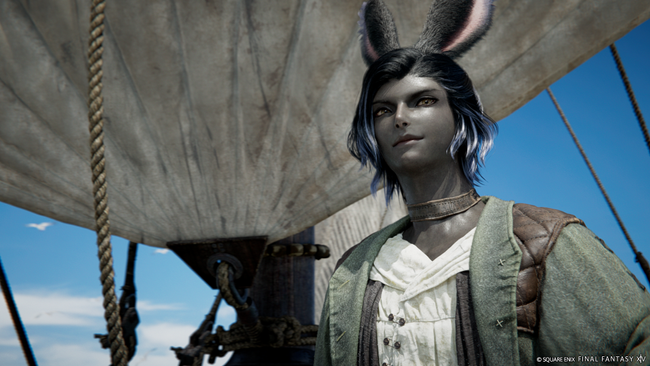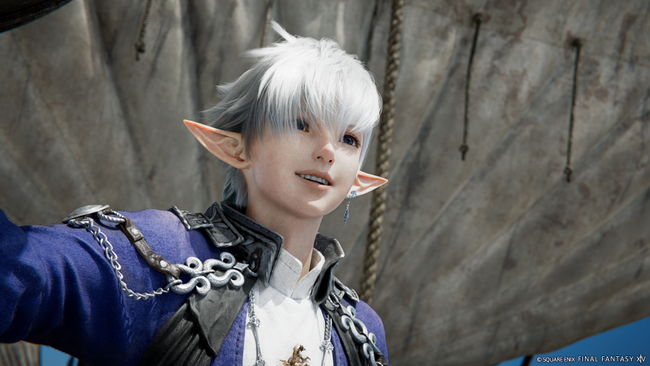
Final Fantasy XIV: Dawntrail is a strong yet imperfect first step for the next decade of the game's story
We're still working on our Final Fantasy XIV: Dawntrail review; as a raider, I didn't think it would be right to put out a scored review before I'd had a chance to raid the first tier of the expansion, and even then I still wonder if I shouldn't wait longer, with so much of Dawntrail's truly new content slated for the post-launch patch cycle. So, don't expect my full thoughts on the expansion for a little while longer - but what I am ready to talk about is the story, for good and ill.
First things first; I won't talk about anything glaringly specific. I'm well aware that some players are still taking their time through the story, and the full release has only been out for a little more than a week - even if the majority of players likely started with Early Access last month. Thankfully, none of my thoughts will spoil events of the story. Though, of course, if you're still playing through Dawntrail it might be a good idea to hit credits before reading any further if you would like to err on the safe side.

Following up on Endwalker, Dawntrail was always going to be stuck with a tough act to follow. While last expansion's story had its share of detractors, by and large it was - and is - celebrated as a strong conclusion to the story arc that XIV has been based on for the last decade. Dawntrail, instead, has to set the stage for the next 10 years of the game - all while maintaining the balancing act of setting up a conflict that would resonate with players even after they'd already gone to the literal edge of existence to fight something akin to the concept of entropy.
Creative Studio 3's answer was simple; a complete change in venue. Out was Eorzea, Sharlayan, Garlemald and any factions players were already familiar with, and instead the story revolves around the succession of the throne in the nation of Tuliyollal, and the search for a legendary city of gold where it's said that people can live forever in eternal youth.

Regardless of the surrounding context of the plot, I'd say that the team stuck the landing where it counts . Tural acts as a great palate cleanser for many of the locations we've visited in the past, especially considering some of the areas showcased in the latter half of the story. Similarly, the characters introduced with the expansion's story are generally memorable; Wuk Lamat, Koana and more are great additions to the cast. The character development for Krile, Erenville and even G'raha Tia are all welcomed, and genuinely add to the story and themes of the expansion when it counts.
Unsurprisingly, the lower stakes of the plot don't continue to the story's conclusion - and that's where I feel the expansion both shines and falters.
I'll be blunt; while some of the returning characters are welcome additions, others felt shoehorned - and with how two of the story's trials are designed to play with Trusts, I can't help but feel that may be more than just my intuition. One of the core tenets of Dawntrail's story is that the Warrior of Light is not, in fact, the main character; we're here to guide Wuk Lamat on her journey to become the Dawnservant, but outside of her own orders we rarely get directly involved. I think that was for the best, and as a concept I don't think there was any other way to handle resetting the stakes without it feeling forced.

What does feel forced, however, is the inclusion of some returning Scions. Maybe I took the wrong idea from the idea of the Scions disbanding on paper at the end of Endwalker, but outside of filling a slot for a Trial I don't know what Alphinaud and Alisae directly contribute to Dawntrail's plot. The same can be said for others such as Y'shtola, and others like Thancred or Urianger similarly give me pause.
Don't get me wrong; I love the Scions. They're one of the best parts of XIV's story, and they're like family to myself and anyone else who's played XIV this long. Yet, Dawntrail's strongest story moments are the ones that personally deal with the themes - and while Krile, Erenville and even G'raha Tia all have something to add to the conversation, it feels like the rest of the crew are just there to fulfill some mandate.

Which is to say, without spoiling Dawntrail's story - there's now a clear path forward for XIV in the years to come, and as such the expansion has been an overwhelming success. Yet, it does make me worry for the future that the devs will be far too likely to drag the Scions into the fold when their absence may lead to a stronger reaction. Restraint is a tool I feel that the XIV team could use far more often when it comes to their storytelling, and I just hope they can realize the importance of it themselves heading into the future. Final Fantasy XIV's future is looking bright, even if surely there are bound to be storms waiting ahead; Dawntrail was the new foundation that we needed.
A Final Fantasy XIV: Dawntrail review code, as well as game time, were provided to RPG Site for the purposes of our coverage.